Overview of Spider Plants

Spider plant, Chlorophytum comosum, is one of the most common and well-known of all houseplants. It is especially popular with beginners, being very easy to grow and propagate, tolerant of neglect, and able to thrive in nearly any type of condition. It gets its common name from the small plantlets produced on long trailing stems that vaguely resemble spiders.
This clump-forming, perennial, herbaceous plant, native to coastal areas of South Africa, has narrow, strap-shaped leaves arising from a central point. Spider plant leaves may be solid green or variegated with lengthwise stripes of white or yellow. The leaves are not flat but appear channeled or folded down the middle. Plants grow 12-15″ tall. Thick, fleshy roots and rhizomes evolved to store water, allowing spider plants to survive inconsistent watering.
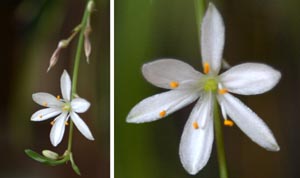
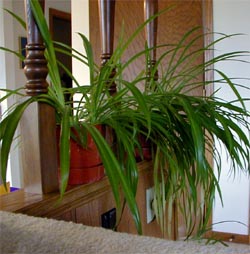
Long, wiry stems up to 2 feet long are produced, sometimes with a few small leaves, typically in response to short days and long, uninterrupted nights for at least three weeks, although when grown indoors they may appear at any time of year. Small white, star-shaped flowers are produced at the ends of the stems. After flowering, more leaves are produced at the end of the stems, forming small plantlets. If a flower is pollinated, a leathery, 3-angled capsule-type fruit is produced that contains flat black seeds.
Studies have shown that spider plant is quite effective in cleaning indoor air by absorbing chemicals including formaldehyde, xylene, benzene, and carbon monoxide in homes or offices.
General care of Spider Plants
Spider plants are very easy to grow indoors in medium to bright light throughout the year. They do well with average humidity and cool to average temperature, although will tolerate warmer conditions. Use a general-purpose potting soil or soilless medium. Plants grow and produce plantlets best when slightly pot bound. Since spider plants grow quickly and roots can easily become too crowded, they need frequent repotting to do their best.
Allow the soil to dry slightly between thorough waterings. Fertilizing every 3-4 months is usually sufficient, or feed more frequently using half strength fertilizer solution. Heavily fertilized plants, however, may not form as many plantlets and excessive fertilizer may lead to tip browning.
Spider plants generally have few pest problems other than scale insects and mealybugs. As with other houseplants, tip burn of the leaves is a common problem that can have many causes. Low humidity, excessively dry soil, salt accumulation and/or chemicals, particularly fluoride or chlorine, in tap water may cause brown leaf tips. Using distilled water or rainwater will help prevent tip browning. Overwatering or planting in poorly drained soils can lead to root rot.
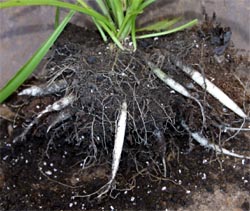
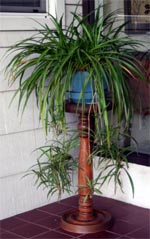
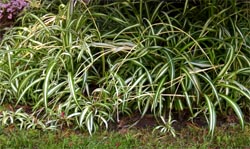
This plant can also be grown outdoors as an annual in cool climates. It does well in most well-drained soils and should be bedded out after the last frost. Spider plant is a good addition to containers with its grass-like foliage that makes a nice contrast to other foliage types. It is quite well suited to a hanging basket, where the stems can hang down. Outdoors they need bright light but can sunburn if grown in full sun. In warmer climates outside of Wisconsin, you may see spider plants used as ground covers in partly shaded areas in the garden.
Propagating Spider Plants
Spider plants are extremely easy to propagate by planting the “spiders” or plantlets that succeed the flowers in their own pots. Set the plantlet, still attached to the mother plant, on the surface of a pot filled with soilless potting medium and allow it to root before severing the stem connecting it to the mother plant. A bent paper clip or piece of wire can be used to hold the plantlet in contact with the soil until it develops roots. Another common propagation method is to simply remove and pot up a plantlet that has already started developing roots. Larger plants can also be divided. They can also be grown from seed, but seedlings will not necessarily have the same leaf coloration as the parent.
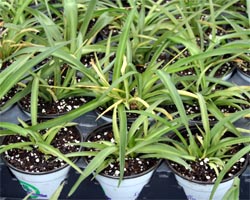
Spider Plant Cultivars
- ‘Milky Way’ – features leaves with green margins and a broad white to cream center, creating a much lighter overall appearance than other cultivars.
- ‘Vittatum’ – has dark green leaves with a wide, creamy white stripe down the center of each leaf. It tends to be slower growing than the green types.
- ‘Variegatum’ – has relatively broad green leaves with white margins. This cultivar tends to produce fewer plantlets than other types.
- ‘White Stripe’ – has a narrow white to cream line down the central leaf vein that is lost as the leaf ages. The flower stalks are cream to yellowish instead of the normal green.
– Susan Mahr, University of Wisconsin – Madison
Last Update: Bruce Spangenberg, UW-Madison Extension 2025





 Houseplant Care
Houseplant Care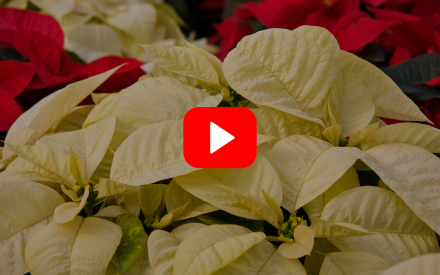 ▶ Watch: Maintaining Your Festive Houseplants
▶ Watch: Maintaining Your Festive Houseplants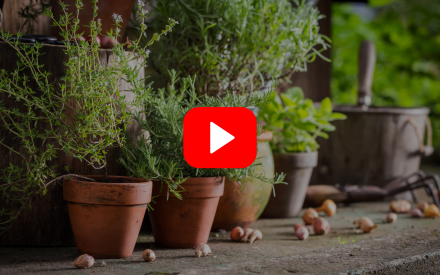 ▶ Watch: Bringing the Garden Inside
▶ Watch: Bringing the Garden Inside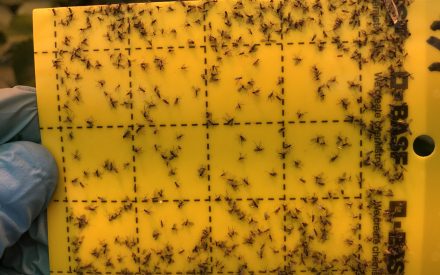 Fungus Gnats on Houseplants
Fungus Gnats on Houseplants


